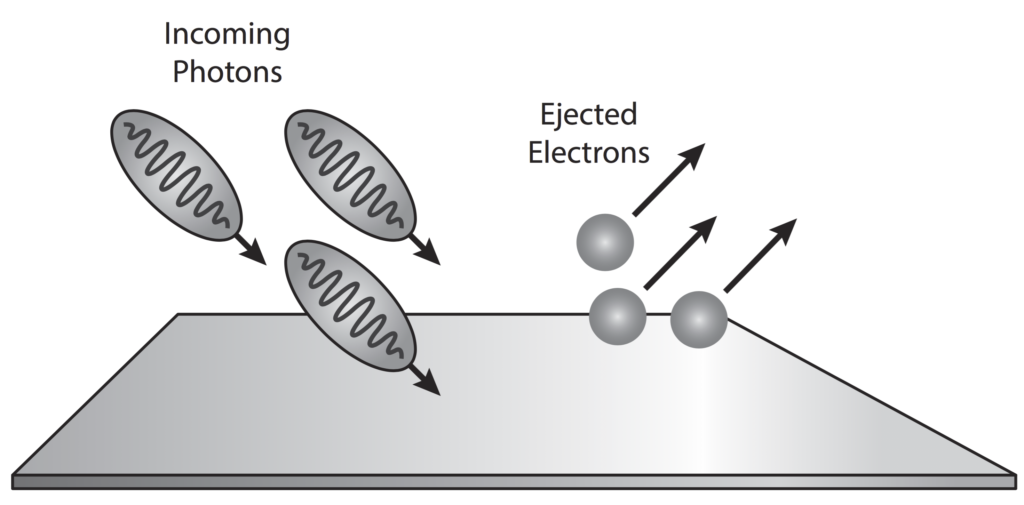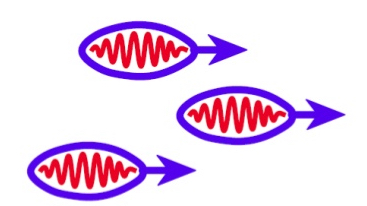In 1905, Einstein’s comparison between dim (or dilute) light, and an ideal (dilute) gas led him to conclude that under certain conditions, light will behave as a particle.
The photoelectric effect is a result of electron-photon pair collisions.

In 1887 Hertz confirmed the wave nature of light and also (inadvertently) its particle (photon) nature as well.
Einstein Revisits His Theory of Light
By 1911, Einstein had already hypothesized that light consists of particles he called light quanta (later called photons). Moreover, he had shown that light has an inherent quality, whereby it exhibits both wave and particle properties. Although, he had seen further than anyone into the mysterious nature of light, it continued to perplex him:
“I do not ask anymore whether these [light] quanta really exist. Nor do I attempt any longer to construct them, since I now know my brain is incapable of advancing in that direction.”
In 1921, Einstein won the Nobel Prize. The citation reads:
“To Albert Einstein for his services to theoretical physics and especially for his discovery of the law of the photoelectric effect.”
To be sure, Einstein is being acknowledge for the “the law of the photoelectric effect”, in other words for his photoelectric equation, but not for the photon concept. This attitude would persist until 1923, when new experimental results would convert pretty much everyone to the existence of photons.
In terms of quantum theory, increasing the intensity of light means increasing the number of photons.
In 1923, Arthur Compton’s (1892-1962) light scattering experiments provided further support for Einstein’s hypothesis for the particle nature of light.
Einstein’s light quanta hypothesis met with tremendous resistance, taking almost twenty years after its introduction in 1905 to be fully accepted. Despite such opposition, Einstein continued to use the concept in his work with significant success.
In 1905, Einstein established wave-particle duality for light. In 1923, de Broglie extended it to all quantum particles. In an interview in 1963 de Broglie reflected on his epiphany:
“As in my conversations with my brother we always arrived at the conclusion that in the case of X-rays one had both waves and [particles], thus suddenly – … it was certain in the course of summer 1923 – I got the idea that one had to extend this duality to material particles, especially to electrons.”
In 1905, Einstein said light is a particle (photon) with energy proportional to its frequency. Although photon momentum was known much earlier to Einstein, he waited until 1916 to finally declare it.
Einstein’s 1905 paper, On a Heuristic Point of View Concerning the Production and Transformation of Light is often (wrongly) referred to as his paper on the photoelectric effect.
In his1905 paper, On a Heuristic Point of View Concerning the Production and Transformation of Light, Einstein showed how his newly introduced light quanta hypothesis could be used to interpret several well-known experimental observations, the most notable of these phenomena being the photoelectric effect.
It was the first of Einstein’s 1905 papers, On a Heuristic Point of View Concerning the Production and Transformation of Light, which he referred to as “very revolutionary” – the only time he would ever say this about any of his work, in fact – and which, in part would win him the Nobel Prize in 1921.
